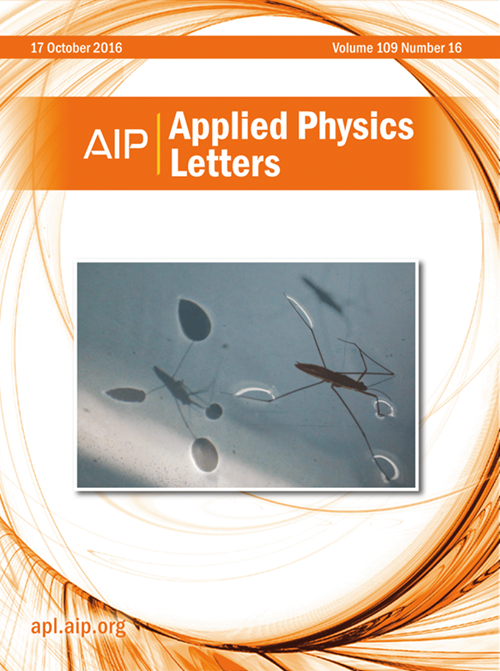Sub-micron circuit fabrication on diamond anvils for mesoscopic high-pressure experiments
IF 3.5
2区 物理与天体物理
Q2 PHYSICS, APPLIED
引用次数: 0
Abstract
We present a fabrication procedure to produce high-quality liftoff structures on diamond anvils that extend continuously from the culet onto the slanted facets. Feature sizes as small as 500 nm are achieved using a trilayer resist stack and electron beam lithography. Device structures with strong adhesion to the diamond surface and high abrasion resistance are realized by optimizing the surface treatment. To benchmark our process, we fabricate a multi-lead tungsten circuit to measure changes in the superconducting transition temperature of zirconium across the structural phase transition at ∼30 GPa, revealing a nearly fourfold increase in the critical temperature. Our process is reproducible in most traditional academic and industrial cleanroom facilities. This method enables reproducible, high-resolution circuit fabrication on diamond anvils and other faceted crystalline substrates.介观高压实验用金刚石砧亚微米电路的制备
我们提出了一种制造工艺,可以在金刚石砧上生产高质量的升降结构,该结构可以连续地从凹槽延伸到斜切面。使用三层抗蚀剂堆栈和电子束光刻技术可以实现小至500纳米的特征尺寸。通过优化表面处理,实现了与金刚石表面粘附力强、耐磨性高的器件结构。为了对我们的工艺进行基准测试,我们制造了一个多导联钨电路,以测量在~ 30 GPa下锆在结构相变中的超导转变温度的变化,发现临界温度增加了近四倍。我们的工艺在大多数传统的学术和工业洁净室设施中是可重复的。这种方法可以在金刚石砧和其他多面晶体衬底上实现可重复的高分辨率电路制造。
本文章由计算机程序翻译,如有差异,请以英文原文为准。
求助全文
约1分钟内获得全文
求助全文
来源期刊

Applied Physics Letters
物理-物理:应用
CiteScore
6.40
自引率
10.00%
发文量
1821
审稿时长
1.6 months
期刊介绍:
Applied Physics Letters (APL) features concise, up-to-date reports on significant new findings in applied physics. Emphasizing rapid dissemination of key data and new physical insights, APL offers prompt publication of new experimental and theoretical papers reporting applications of physics phenomena to all branches of science, engineering, and modern technology.
In addition to regular articles, the journal also publishes invited Fast Track, Perspectives, and in-depth Editorials which report on cutting-edge areas in applied physics.
APL Perspectives are forward-looking invited letters which highlight recent developments or discoveries. Emphasis is placed on very recent developments, potentially disruptive technologies, open questions and possible solutions. They also include a mini-roadmap detailing where the community should direct efforts in order for the phenomena to be viable for application and the challenges associated with meeting that performance threshold. Perspectives are characterized by personal viewpoints and opinions of recognized experts in the field.
Fast Track articles are invited original research articles that report results that are particularly novel and important or provide a significant advancement in an emerging field. Because of the urgency and scientific importance of the work, the peer review process is accelerated. If, during the review process, it becomes apparent that the paper does not meet the Fast Track criterion, it is returned to a normal track.
 求助内容:
求助内容: 应助结果提醒方式:
应助结果提醒方式:


